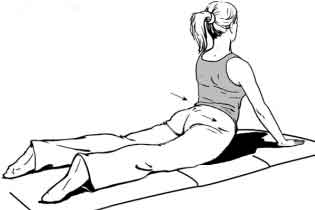New research shows that exercise to improve skill and coordination can help reduce lower back pain
 A new Cochrane Review shows that targeting exercises to muscles that support and control the spine offers another strategy to reduce pain and disability caused by lower back pain.
A new Cochrane Review shows that targeting exercises to muscles that support and control the spine offers another strategy to reduce pain and disability caused by lower back pain.
Lower back pain is one of the most common health conditions worldwide. It can have substantial health and economic costs as people experience disability and general ill health, leading them to need time off work.
Motor control exercise is a popular form of exercise that aims to improve coordination of the muscles that control and support the spine. Patients are initially guided by a therapist to practise normal use of the muscles with simple tasks. As the patient’s skill increases the exercises become more complex and include the functional tasks that the person needs to perform during work and/or leisure activities.
The new study, published in the Cochrane Library, gathered together data from 29 randomized trials involving a total of 2,431 men and women, aged between 22 and 55 years old. The trials investigated the impact of using motor control exercises as a treatment for lower back pain compared with other forms of exercise or doing nothing.
The Cochrane authors found that people who used motor control exercises experienced improvements, especially in pain and disability compared with minimal intervention. When compared with other types of exercise at intervals between 3 and 12 months motor control exercise provided similar results for pain and disability.
Lead author, Physiotherapist Bruno Saragiotto, from The George Institute, University of Sydney, Australia, said, “Targeting the strength and coordination of muscles that support the spine through motor control exercise offers an alternative approach to treating lower back pain. We can be confident that they are as effective as other types of exercise, so the choice of exercise should take into account factors such as patient or therapist preferences, cost and availability. At present, we don’t really know how motor control exercise compares with other forms of exercise in the long term. It’s important we see more research in this field so that patients can make more informed choices about persisting with treatment.”
Full bibliographic information:
“Motor control exercise for chronic non-specific low-back pain.” Saragiotto BT, Maher CG, Yamato TP, Costa LOP, Menezes Costa LC, Ostelo RWJG, Macedo LG. Cochrane Database of Systematic Reviews,

